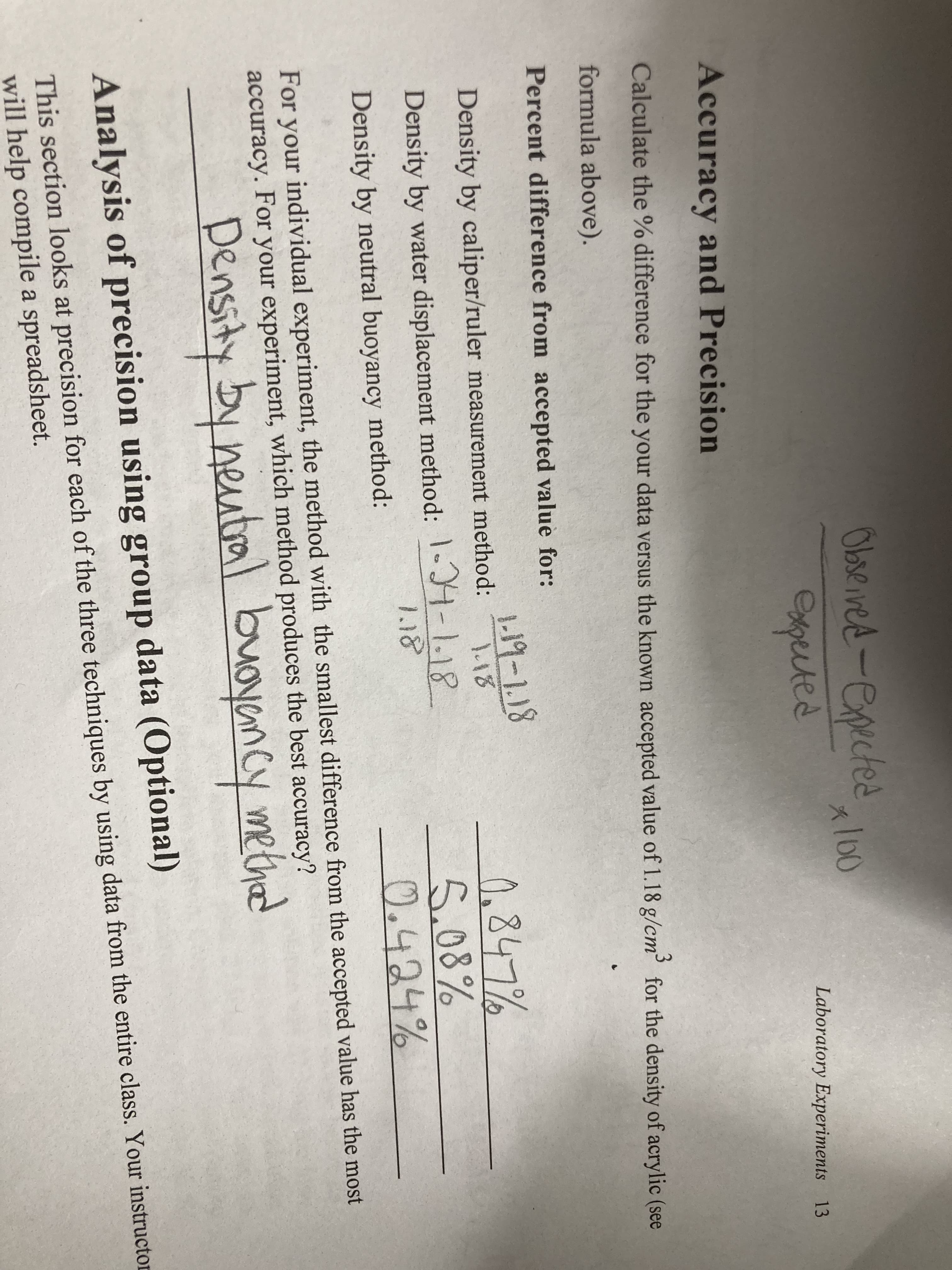If I have these values and need to calculate percentage, what are the significant figures I need? 1.23, 4.56 so 1.23/4.56 x 100 is 3 significant figures or 1? I just attached a similar question and used arbitrary values just to understand the significant figures pRt
If I have these values and need to calculate percentage, what are the significant figures I need? 1.23, 4.56 so 1.23/4.56 x 100 is 3 significant figures or 1? I just attached a similar question and used arbitrary values just to understand the significant figures pRt
Chapter4: Least-squares And Calibration Methods
Section: Chapter Questions
Problem 4P
Related questions
Question
If I have these values and need to calculate percentage, what are the significant figures I need?
1.23, 4.56
so 1.23/4.56 x 100 is 3 significant figures or 1?
I just attached a similar question and used arbitrary values just to understand the significant figures pRt

Transcribed Image Text:Obse ved-ex
pected
Cxpected
Laboratory Experiments 13
Accuracy and Precision
Calculate the % difference for the your data versus the known accepted value of 1.18 g/cm for the density of acrylic (see
formula above).
Percent difference from accepted value for:
1.1१-1.18
1.18
0,847%
5.08%
0.424%
Density by caliper/ruler measurement method:
Density by water displacement method: 1-4-1.18
118
Density by neutral buoyancy method:
For your individual experiment, the method with the smallest difference from the accepted value has the most
accuracy. For your experiment, which method produces the best accuracy?
Density by neutal buayancy methad
Analysis of precision using group data (Optional)
This section looks at precision for each of the three techniques by using data from the entire class. Your instructor
will help compile a spreadsheet.
Expert Solution
This question has been solved!
Explore an expertly crafted, step-by-step solution for a thorough understanding of key concepts.
Step by step
Solved in 2 steps with 2 images

Knowledge Booster
Learn more about
Need a deep-dive on the concept behind this application? Look no further. Learn more about this topic, chemistry and related others by exploring similar questions and additional content below.Recommended textbooks for you



Principles of Instrumental Analysis
Chemistry
ISBN:
9781305577213
Author:
Douglas A. Skoog, F. James Holler, Stanley R. Crouch
Publisher:
Cengage Learning



Principles of Instrumental Analysis
Chemistry
ISBN:
9781305577213
Author:
Douglas A. Skoog, F. James Holler, Stanley R. Crouch
Publisher:
Cengage Learning